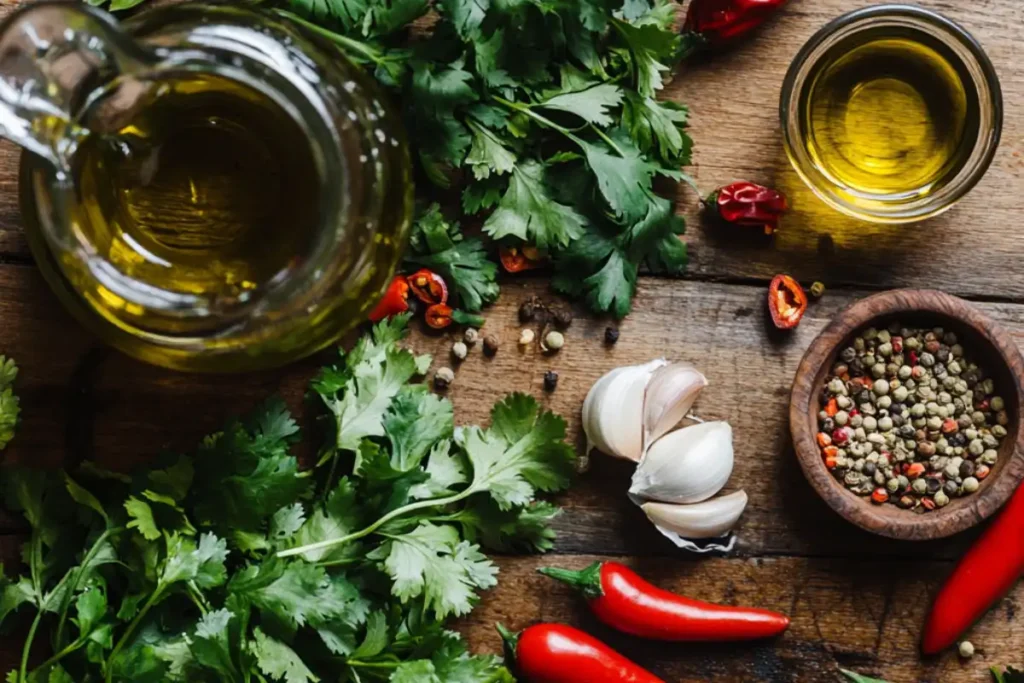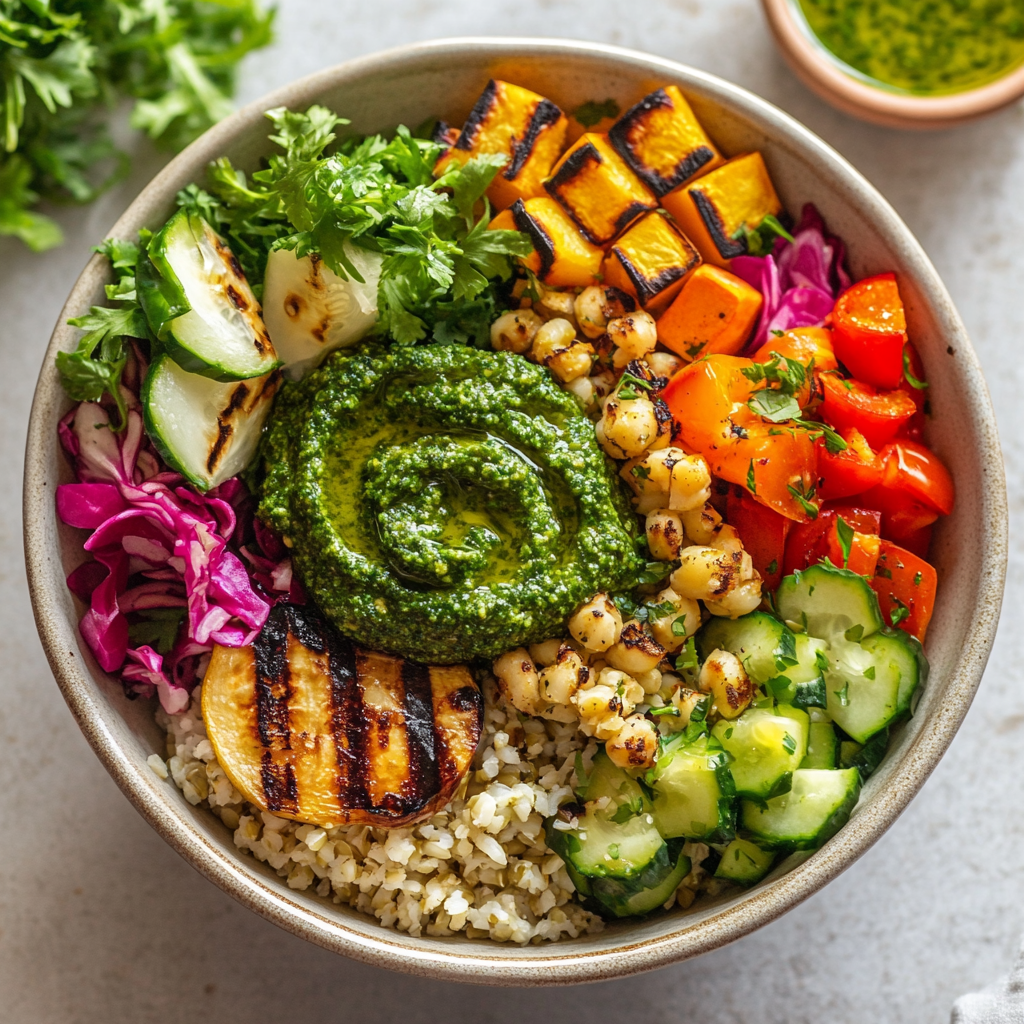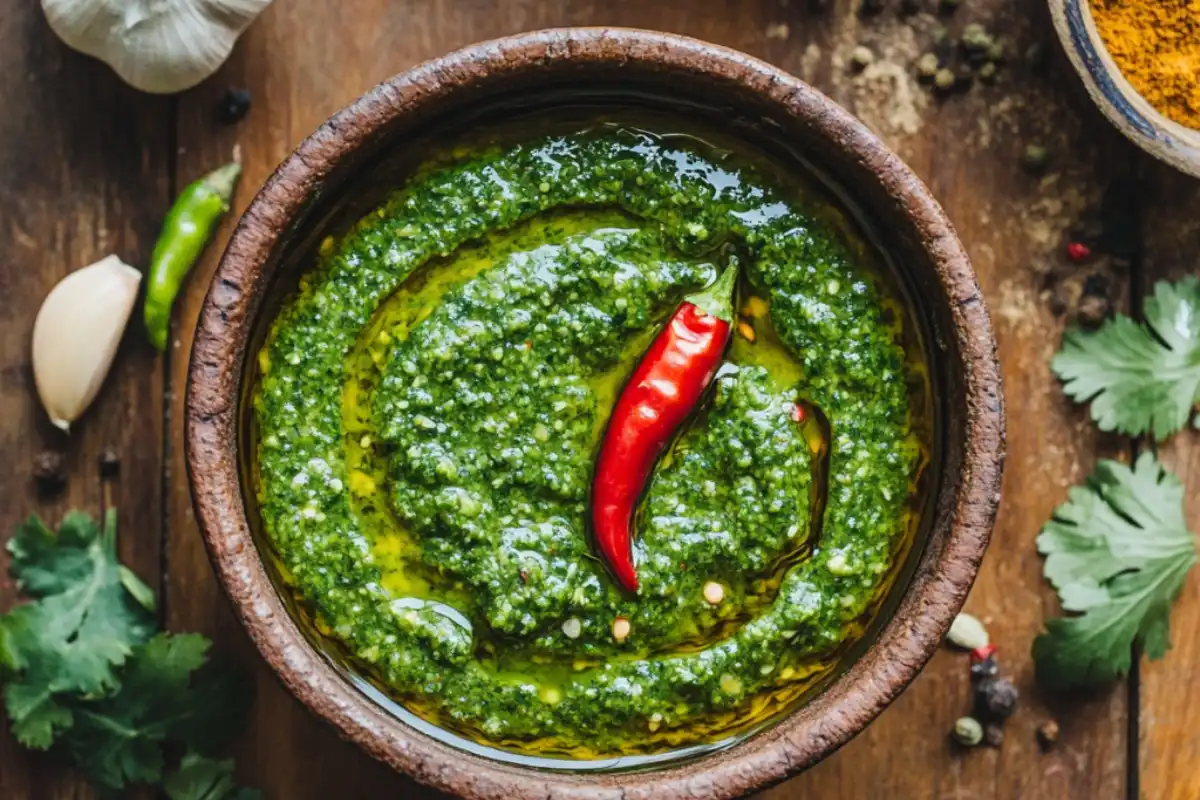Skhug sauce, also known as zhug or shug, is a fiery, herbaceous condiment originating from Yemeni and Middle Eastern cuisines. Known for its bold, spicy flavors, this sauce has become a favorite around the world, especially in Israeli and Mediterranean dishes. Whether you prefer it green, red, or with a smoky brown twist, Skhug can transform even the simplest of meals into something exciting.
In this article, we’ll dive into what Skhug sauce is, how it’s made, the key ingredients, its variations, and its many uses. If you love experimenting with global flavors, Skhug will surely be a game-changer in your kitchen.
What is Skhug Sauce?
Skhug sauce is a spicy condiment made from fresh herbs, chili peppers, garlic, olive oil, and a combination of traditional Middle Eastern spices. Originally from Yemen, it quickly became popular in Israel and other parts of the Middle East due to its versatile and vibrant flavor.
This sauce is typically served alongside falafel, shawarma, kebabs, and a variety of grilled meats and vegetables. Its bright color, fiery heat, and fresh flavor make it a perfect accompaniment to savory dishes, enhancing their richness and adding a fresh kick.
To better understand the role of herbs like cilantro in Skhug and other dishes, check out this guide on cilantro vs parsley in cooking. Knowing the difference between these herbs can help you decide which flavor profile best suits your Skhug sauce.
Key Ingredients of Skhug Sauce
While there are several variations of Skhug sauce, the core ingredients remain largely the same. These fresh and bold components come together to create a sauce that is as flavorful as it is simple. Here’s a breakdown of the essential ingredients:
1. Fresh Herbs:
- Cilantro is the most common herb used in Skhug, providing a bright, fresh base that complements the heat of the chili peppers.
- Parsley can also be used, either as a substitute for cilantro or in combination with it.

2. Chili Peppers:
- Green chili peppers (such as serrano or jalapeño) are typically used for green Skhug.
- Red chili peppers (like cayenne or Fresno peppers) give red Skhug its distinct color and a bit more heat.
3. Garlic:
Garlic is an integral part of the sauce, offering a sharp, pungent bite that enhances the overall flavor.
4. Spices:
Traditional Skhug recipes include a blend of spices such as:
- Cumin: Earthy and warm, it complements the heat of the chilies.
- Coriander: Adds a citrusy note to the sauce.
- Cardamom: A sweet, floral spice that rounds out the flavor.
5. Olive Oil:
Good-quality olive oil helps bring all the ingredients together and adds a rich, smooth texture to the sauce.
6. Lemon Juice or Vinegar:
Adding an acidic element like lemon juice or vinegar balances the heat and freshness, creating a well-rounded flavor.
If you’re making Skhug at home, be sure to store it properly to maintain its freshness. Learn more about storing sauces like Skhug in this guide on how to store homemade sauces.
Different Types of Skhug Sauce
There are three main types of Skhug sauce: green, red, and brown. Each type offers a slightly different flavor profile, depending on the ingredients and the method of preparation.
1. Green Skhug:
This is the most popular version, made with green chilies and cilantro. It’s bright, fresh, and has a moderate level of heat.
2. Red Skhug:
Red Skhug uses red chilies instead of green ones, which often results in a hotter and slightly smokier flavor. It’s ideal for those who enjoy a stronger kick in their food.

3. Brown Skhug:
Brown Skhug is less common but equally delicious. It’s made by toasting the spices before blending them with the herbs and chilies, creating a deeper, more roasted flavor.
All these variations offer different levels of spiciness and flavor. If you’re a fan of fiery sauces, you might prefer red Skhug, while green Skhug provides a fresher, slightly milder option.
How to Make Skhug Sauce at Home
Making Skhug sauce at home is simple and allows you to adjust the heat level according to your preference. Here’s a basic recipe for green Skhug, but feel free to tweak it to suit your taste.
Ingredients:
- 2 cups of fresh cilantro (or a mix of cilantro and parsley)
- 4-5 green chili peppers (adjust based on your spice tolerance)
- 3 cloves of garlic
- 1 teaspoon of cumin
- 1 teaspoon of coriander
- 1/4 teaspoon of cardamom
- 2 tablespoons of lemon juice
- 1/4 cup of olive oil
- Salt to taste
Instructions:
- Prepare the Ingredients: Wash and dry the cilantro. Remove the thick stems, leaving the tender stems and leaves. Slice the chili peppers and remove the seeds if you want a milder sauce.
- Blend the Ingredients: In a food processor, combine the cilantro, chili peppers, garlic, and spices. Pulse until finely chopped.
- Add Oil and Lemon Juice: Slowly add the olive oil and lemon juice while blending until the mixture reaches a smooth consistency. Adjust the salt to taste.
- Store and Serve: Transfer the sauce to an airtight container and store it in the fridge. It will stay fresh for up to a week. You can also freeze it for up to three months.
Making Skhug at home allows you to adjust the spiciness and experiment with different flavors. Plus, it’s fresher than any store-bought version!
Creative Uses for Skhug Sauce
Skhug sauce is incredibly versatile and can be used in many different ways. Whether you’re adding it to a dish as a condiment or using it as an ingredient in your cooking, Skhug brings a burst of flavor and heat to every bite.
1. As a Condiment:
Skhug is most commonly used as a condiment alongside dishes like falafel, shawarma, or grilled meats. Its spicy, fresh flavor pairs beautifully with the rich, savory flavors of these foods.
For example, if you’re making a Mediterranean-inspired meal, you can serve Skhug with pork chop casserole to add an extra layer of flavor to the dish.
2. As a Marinade:
Skhug can also be used as a marinade for meats and vegetables. The acidity from the lemon juice or vinegar, combined with the spices and herbs, makes it perfect for marinating chicken, lamb, or fish before grilling.
3. As a Dip:
Use Skhug as a dip for pita bread, crackers, or fresh vegetables. It’s a great addition to a mezze platter, where it complements other dips like hummus and baba ganoush.
You can also enjoy it with a lighter snack like cinnamon roll pancakes for a delightful balance between sweet and savory flavors.
4. As a Topping:
Drizzle Skhug sauce over your favorite salads, grain bowls, or sandwiches. Its fresh, spicy flavor enhances everything from simple grilled vegetables to more complex dishes like hummus bowls.

How Spicy is Skhug Sauce?
The spiciness of Skhug sauce largely depends on the type and quantity of chili peppers used. Typically, green Skhug is made with green chilies like jalapeños or serranos, which provide a moderate heat, making it more approachable for those who prefer a milder kick. On the other hand, red Skhug uses spicier chili varieties like cayenne or Fresno peppers, resulting in a hotter version of the sauce. If you’re making Skhug at home, you can easily adjust the heat level by either removing the seeds and membranes from the chilies, which hold the most heat, or selecting milder or hotter peppers to suit your taste.
Store-Bought vs. Homemade Skhug Sauce
If you’re deciding between buying Skhug sauce from the store or making it yourself, here’s a quick comparison of the two options:
Store-Bought Skhug:
- Convenient: Store-bought Skhug is pre-made and ready to use.
- Consistency: Commercial Skhug tends to have a uniform texture and flavor, but it may contain preservatives and other additives that alter its taste.
Homemade Skhug:
- Freshness: Homemade Skhug offers a much fresher flavor, especially when made with high-quality ingredients.
- Customization: When you make Skhug at home, you have control over the spice level, consistency, and even the balance of herbs and spices.
While store-bought Skhug can be a time-saver, homemade Skhug allows for more creativity and freshness in your cooking.
How to Store Skhug Sauce
Skhug sauce is best stored in an airtight container in the refrigerator. When properly stored, it will stay fresh for up to one week. The olive oil and acidity from the lemon juice or vinegar help preserve the herbs and chilies, keeping the flavors vibrant. For longer storage, Skhug can be frozen. Simply transfer the sauce into a freezer-safe container or ice cube trays, where it will last for up to three months. When ready to use, thaw it in the refrigerator and give it a stir to bring back its original texture and flavor. Proper storage ensures that your homemade Skhug retains its freshness and punchy flavors.
FAQs About Skhug Sauce
1. What does Skhug sauce taste like?
- Skhug sauce is spicy, fresh, and herbaceous. The combination of cilantro, garlic, and chilies gives it a vibrant, bold flavor.
2. How spicy is Skhug sauce?
- The spiciness of Skhug can vary depending on the type and amount of chili peppers used. Green Skhug tends to be milder, while red Skhug is often hotter.
3. Is Skhug sauce gluten-free?
- Yes, Skhug sauce is naturally gluten-free, as it doesn’t contain any grains or wheat-based ingredients. However, always check the label when buying store-bought versions.
4. How long does Skhug sauce last in the fridge?
- Homemade Skhug sauce can last up to a week in the refrigerator if stored in an airtight container. For longer storage, you can freeze it for up to three months.
Conclusion: Why You Should Try Skhug Sauce
Skhug sauce is an incredibly flavorful condiment that adds a bold, spicy kick to any dish. Whether you’re using it as a dip, marinade, or topping, its fresh, herbaceous flavor can elevate both simple and complex dishes.
If you haven’t tried Skhug sauce yet, now is the perfect time to add it to your repertoire. You can experiment with different variations, adjust the spiciness to your liking, and enjoy it with a variety of Middle Eastern or Mediterranean meals.
For more recipe inspiration, consider pairing Skhug with pork chop casserole, or try it with cinnamon roll pancakes for a fun, unexpected twist.

